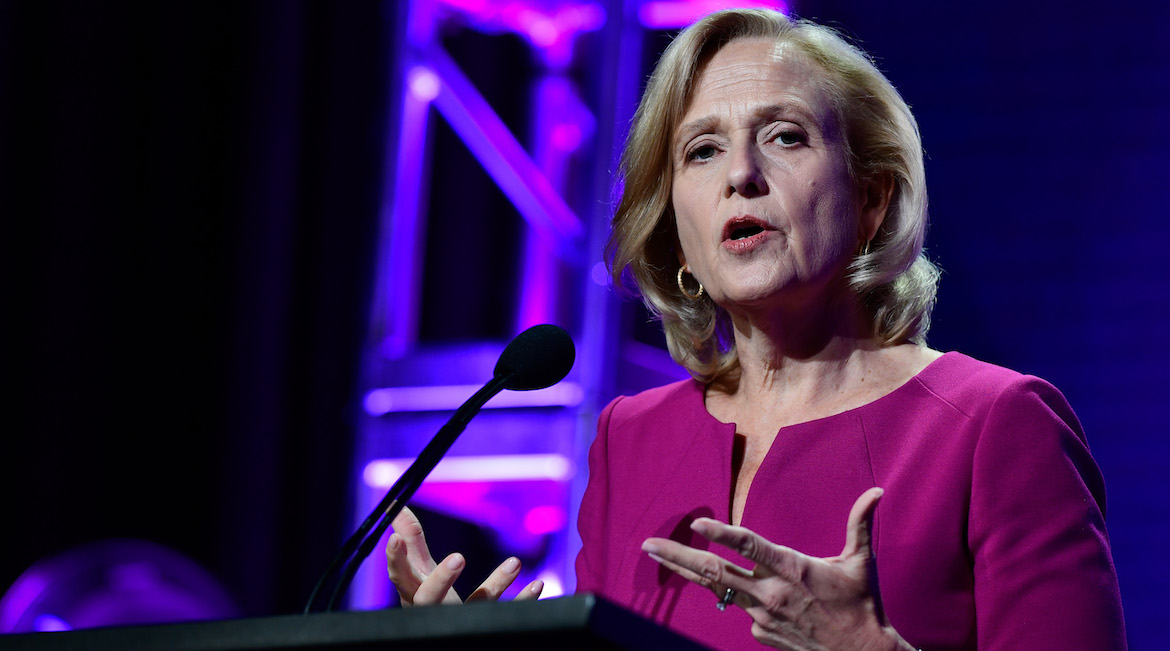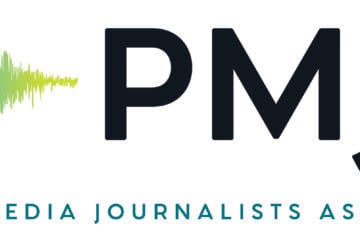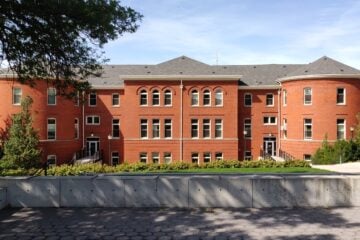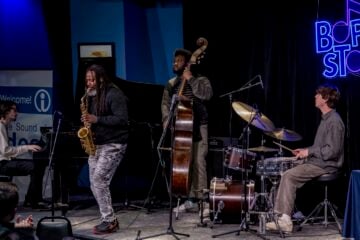In PBS’ 50th year, Paula Kerger sets course to ‘speak to the moment of what is happening now’

Rahoul Ghose / PBS
PBS President Paula Kerger speaks during the Television Critics Association 2018 Summer Press Tour.
PBS had big plans to mark its 50th anniversary this fall, but 2020 turned out to be a year to focus on the present, not the past.
As the country went into lockdown in March during the first wave of the coronavirus pandemic, PBS looked for ways to “double down on public service,” President Paula Kerger told Current in a recent interview. One immediate priority was creating daytime broadcast schedules and curated LearningMedia content that support at-home learning of K–12 students. Kerger also described how veteran programmer Sylvia Bugg rose above all other candidates in PBS’ search for a new chief program executive and discussed PBS’ commitment to diversity, equity and inclusion within its own workforce.
This is an edited transcript of the conversation among Kerger, Current Reporter Julian Wyllie and Managing Editor Karen Everhart.
Current: Two months after you unveiled plans to mark PBS’ 50th anniversary, the coronavirus pandemic upended life as we knew it. American Portrait, your signature anniversary-year project, had to adapt quickly to capture personal stories about life during lockdown and, later, protests against systemic racism. How did PBS itself adapt?
Paula Kerger: Since mid-March we’ve been in telework. That means 92% of our staff are working outside the office. The remaining staff are engineers and technical staff who largely work in the broadcast center.
We moved into telework quickly because our broadcast engineers are essential to our operations. They also tend to be a little older. We wanted to make sure they were protected from the virus.
It’s amazing how much we’ve been able to accomplish remotely. Who would think that Judy Woodruff would be anchoring the PBS NewsHour from her house? Even on the technology side, we’re now remotely doing some of the work that one would never have thought could be done off-site.
This whole period has been weird, and then you have the 50th anniversary dropped into the middle of it. I thought that we’d be looking back at all the great moments in public broadcasting history.
We had organized a social media campaign featuring some of the personalities from over the years. We thought of American Portrait as a project that would be at the center of our 50th-anniversary celebration. When you mark an anniversary, it’s important to be looking forward, not just backward. We’ve accomplished this much in the last 50 years. What will we do in the next five or 10 years? What does that look like? How do you build on that legacy?
American Portrait, which is a digital-first project, was an opportunity to let authentic individual voices drive the narrative. That was really the vision for it. We also planned a lot of station engagement and outreach that then became impossible.

But we continued to pivot around on American Portrait. We did a very quick turnaround around COVID by changing some of the prompts that we’d used for online submissions. “I never thought …” was the big prompt. It got people really talking about this period. As we went through the experience of the murder of George Floyd and the national conversation around race and racism, American Portrait became a platform to continue capturing those stories. Not even this project is turning out the way that we thought, but it will create an archive of a real conversation that is important.
We also moved our headquarters from 2100 Crystal Drive to 1225 South Clark Street in Crystal City at the end of September. Only a handful of people have actually seen the new space. I saw it when it was almost finished, and it was just odd.
To move out of the old building, people went back to pack up their desks in the summer. We did this over a period of many weeks, with social distancing and so forth. We never had a goodbye to a building that had been our home for 15 years. And now we occupy a new space that no one can even imagine.
How have all these disruptions during PBS’ 50th anniversary year affected your priorities and strategies going forward?
Kerger: What we actually have done in marking our 50th anniversary is to double down into public service by asking and thinking about “What does the country need at this moment?” One big piece of it has been around education and making sure that we’re creating tools and resources.
In early February, Austin Beutner from the L.A. Unified School District called to say, “Look, we’re going to have kids at home, and a lot of kids at home without access to broadband. Can you support us in any way?” The district’s PBS station, KLCS, has only a few employees. We worked with all the California stations — not just the Los Angeles stations — and BaBette Davidson, who oversees scheduling for a number of stations. And we looked at both how we could pivot some scheduling and leverage LearningMedia for at-home learning. We went from about 1 million users of LearningMedia to 4 million within a week or two. That heavy usage has been sustained.

A second really important piece of our public-service focus has been around news and information — everything from coverage of COVID to the election and so forth. People from both sides of the aisle trust PBS and come to us for information. Many of our strand producers — Frontline, Nova and others — have focused on information about COVID.
The third is thinking about what I see as this higher purpose of what PBS was envisioned to be — not just a source of information for kids and in public affairs, but also an inspiration. I continue to pay close attention to the arts. This is an existential moment for so many arts organizations around the country. We are thinking about how we can bring more arts work forward.
We’re also talking to filmmakers like Ken Burns, Skip Gates, Stanley Nelson and others about how we can bring forward films that really inspire us. Some of our documentaries hearken back to a time when we truly came together around self-sacrifice and a higher calling. How can they also speak to the moment of what we’re experiencing now?
PBS Kids content has been a really important part of our special content. We looked for specific, appropriate information for kids around COVID and race and racism, including the special PBS Kids Talk About: Race and Racism that premiered last month and a lot of the material we’ve created for classrooms. Parents and teachers want to talk to their children in an appropriate way, and resources are not easy to find. We’ve worked with a lot of people who are experts in this area.
As we look forward, we’re identifying gaps in curriculum where we had the material that we can bring forward. And that part of it is just the legacy of PBS.
This is how we’ve ended up marking the moment of PBS’ 50th anniversary. It’s also important for us to continue to think about, how do we continue to evolve? What are the things that we should be building on that will meet the needs of people right now?
I think of that as the new chapter that begins our next 50 years. What are going to be the important issues that we should continue to follow, and how do we build those up?
One of the big changes that will influence how PBS evolves is Sylvia Bugg’s recent promotion to chief program executive. She played a key role in shaping PBS’ program strategy around race and racism this summer. She has also been very involved with World Channel programming and brings a lot of experience working with stations, producers and CPB. How does her background and experience fit with what you’ve described for PBS to evolve for its next 50 years?
Kerger: Not only does she have relationships with a lot of producers, she has a deep knowledge of our system and sees where the opportunities sit, particularly with engaging stations. Before she came back to PBS, she was at CPB, where she had already been helping us look across all of our strands to identify new talent within the system. We have talent that haven’t yet risen to positions like executive producer. How do we lift those people up? How do we look for new voices?
Right around the time she joined us, we moved Digital Studios into the content area. That allows us to look at new voices, new filmmakers and people who are working in different media, as well as those who are producing for broadcast. So many people have really found their paths into creating media through the YouTube space. She has spent a lot of time thinking about where she would like to make some investments.
I couldn’t be happier to get her to return to PBS in really a central role.
We did a full search for the chief program executive because it’s an important position. We wanted to be able to say that we had really reached out to the marketplace. We had excellent candidates, but she clearly rose above everyone.
She is going to be a hugely significant player in really charting the future direction of PBS. Sylvia comes from within our world and understands it really well. Her relationships with our producing partners and others are key because they help us build this together. She’s a great collaborator, she has great vision in her own right, but she really has this innate ability to bring people together, and I think that’s going to serve us well.
She’s only been in the job a few weeks and she’s still on that tour where she’s talking to a lot of people for the first time in this new job.
We recently republished an essay by independent filmmaker Grace Lee, who challenged PBS and other decisionmakers to broaden their definition of who can be promoted as “America’s Storyteller,” as PBS does with Ken Burns. Ken is so prolific, and his films are so central to the PBS viewing experience. But Grace called for public TV to use more of its funding and airtime to promote work of a more diverse group of filmmakers. What was your reaction to that essay?
Kerger: I admire Grace, but I don’t agree with her premise. It’s incorrect to say that PBS is all Ken Burns. Ken does usually one series a year. She implied that we spend most of our money on Ken’s films. Ken raises most of his own money.
We’ve always looked at ourselves as “America’s Home for Documentaries.” I use that phrase all the time because other media organizations try to claim the label, when it’s really us. We devote more hours to documentary film than anybody else. And if you look at our scope of work in any year, we work with a wide range of filmmakers.

As we look forward, we’re going to grow as an organization and to continue to look for ways to bring in more and more new voices. Ken and Stanley Nelson are part of a generation of filmmakers whose work has been a mainstay of public broadcasting. For us to succeed as a media organization, we have to constantly be looking at that next generation.
As I mentioned earlier, there are a lot of people who have worked on different productions, worked with filmmakers like Ken and Stanley. They have been in the number-two and number-three roles, but they also have their own great stories to tell. We want to elevate some of them and give them opportunities to executive-produce their films. We’re not just looking at this within PBS, but across the public television system. We work with the various consortiums and producers of Independent Lens and POV. Even within the strand series, there are some big opportunities for more people to tell their stories. The more that we can continue to stay focused on that, we’re a stronger system for it.
We don’t always have a lot of money to invest in promotion and so forth, but we try to really get behind key films, as we did with Grace’s recent series And She Could Be Next. We took that to the Television Critics Association Press Tour and did a big push to promote it. We’re looking at a second broadcast before the end of the year.
We’ve been talking more deeply with the World Channel about ways to deepen the showcase of independent voices. Could we do more in talking about films as they come up? Yes — through social media and through the limited promotion budgets we have.
We’re always looking to push our documentaries to make sure that there’s visibility for all the work that’s coming in, because there’s so much great work on public television. If we could carve out some money to get more people to our schedule on a regular basis, people would see the huge range of programing that we do. I’ve got to find somebody to give me some money to do this. I think these documentaries are what defines public broadcasting.
[Editor’s note: Following publication of this interview, PBS spokesperson Eleanor Hawkins corrected Kerger’s statement about promoting And She Could Be Next at the Television Critics Association Press Tour. PBS had planned a session on the series at the tour but canceled it because key participants in the film weren’t available.]
A coalition called Public Media for All organized this fall to help bring focus and accountability on diversity, equity and inclusion within public media. NPR just signed a pledge to do this work with accountability. How is PBS responding to the calls to improve DEI practice within its own workplace? And are you considering signing the pledge?
Kerger: We have been in the space for a long time. Last year we began working with a company that looked within PBS, at our own culture. For many years I’ve had not only a diversity committee within PBS that’s focused on human resources, but also a very active diversity committee on the PBS Board.
A year ago, we hired Kristen Crockett as director of learning and engagement on our human resources team. She has been doing some training for people around the system, and she’s very skilled in this area.
We also retained Amber Cabral, who is one of the country’s leading experts in DEI. She built the diversity program for Walmart and other organizations, and she is working with us within PBS. Specifically, she is doing trainings for our staff, managers and senior leaders on unconscious bias and how to build an antiracist organization. We’re also going to be working with Amber and general managers from across the system to discuss diversity, equity and inclusion at our December GM meeting.
Kristen has talked with Consuela “Sway” Steward of Greater Public, who is working with Public Media for All. We applaud Public Media for All’s efforts to raise awareness and increase diversity and inclusion efforts across public media. PBS’s current DEI work aligns with many of the action items they’ve outlined.
We do not intend to sign the pledge. Kristen and Sway agreed that PBS is much further down the pike on a lot of this work. We are focused on developing a comprehensive and responsive strategy that meets our organization’s unique needs. We’re going to continue with what we’re doing.
There’s been an explosion of content available for streaming through providers like HBO Max, Disney Plus, Peacock and, soon, the renamed Paramount Plus. For several years now, PBS has offered free and Passport membership streaming. Last year, PBS and stations introduced live local streams via YouTube. How will the intensifying competition among streaming video providers affect PBS and its stations?
Kerger: It’s a far more complicated market. In conversations with stations, I often say, “It’s not a place for the faint of heart.”
Over the last few years, we have built up the infrastructure that enables our stations to stream. The YouTube TV deal was significant because it is our first foray into streaming. What made it complicated is that we wanted to be able to stream stations, not just a generic PBS feed. And, to be honest, most of the streamers weren’t so interested in that. They didn’t want to take streams from every station around the country. But I think that it’s the right space for us to be in, particularly during COVID. All of the trends we’ve seen in changing consumer behavior have been accelerated by COVID.
Last year people were subscribing to an average of three streaming services. I think that number has doubled, and we want to make sure that we’re out there in a consideration set. The different platforms and the apps built into smart TVs are important places for our stations to be accessible. We want to make sure that we’re enabling that.
PBS was created to be the organization that creates efficiency at scale for stations — to put together the core schedule and manage the satellite feed. Now we also help negotiate and navigate through these various streaming platforms so that our stations are on there and visible.
The rebranding that we went through last year was very much done with this in mind. We wanted to create a powerful PBS brand that popped on all these different platforms. Many stations have adopted that brand. It helps people navigate through all these different places to find their local public television station. All of this branding work has been really moving towards this moment.
We’ll continue to expand and to try to get our content on as many platforms as possible. It’s really important that we’re in the places where people are looking for us. If we’re not, we could very easily be overlooked. We’re working with great filmmakers who have created extraordinary content to make sure that their work is in all of the places where people will be liable to look. As much as we’re developing a robust pipeline of content, we’re also making sure that distribution is well thought through. These are the two strategic priorities for PBS.






